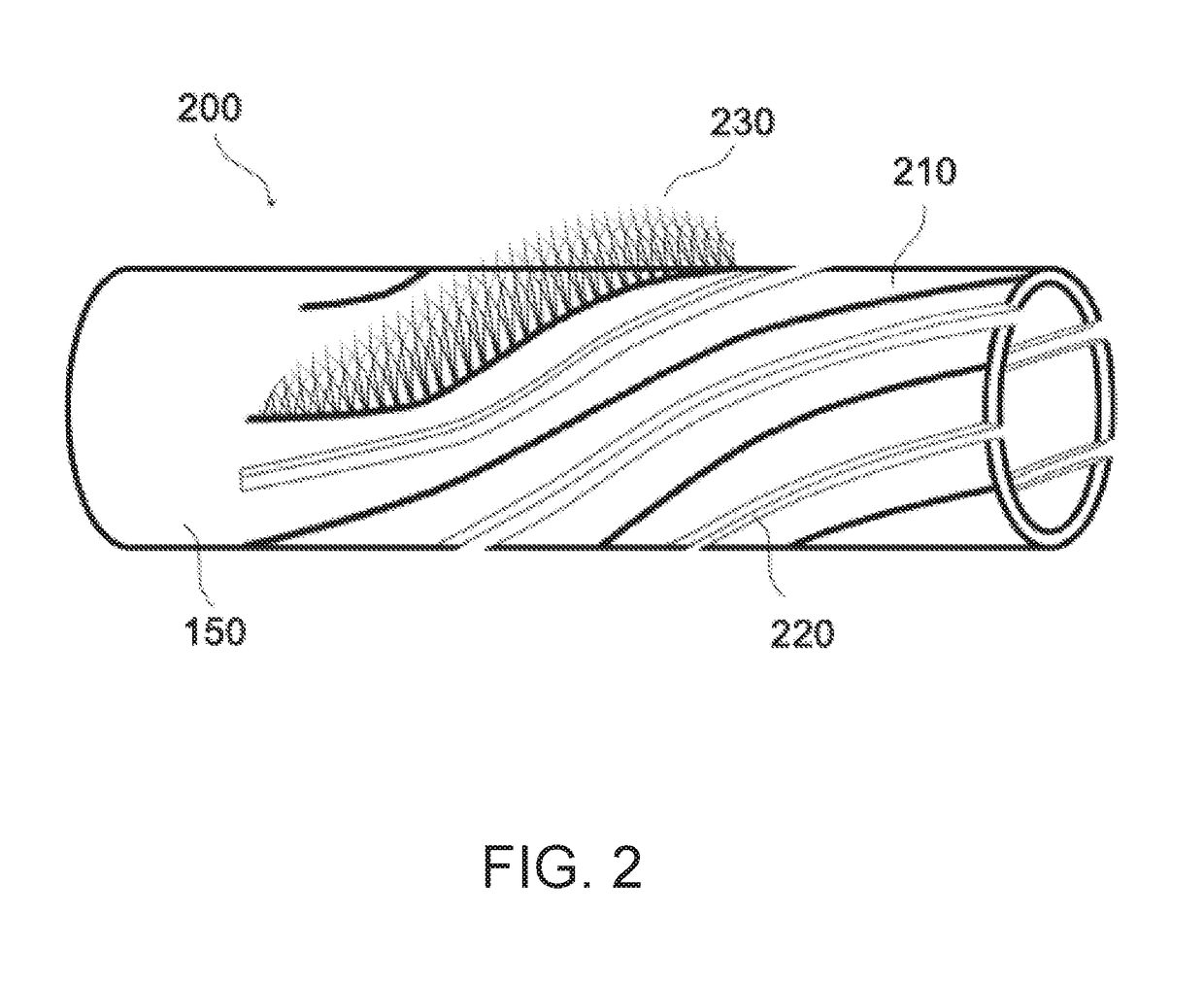Endotracheal cleaning suction brush
a technology of endotracheal tubes and suction brushes, which is applied in the direction of respirators, applications, catheters, etc., can solve the problems of increasing the length of hospital stay and health care costs per patient, the limited technology of cleaning the endotracheal tube, and the build-up along the inner surface of the breathing tube, so as to minimize the overall suction pressure loss, optimize debris/section aspiration, and effectively remove bacterial films and secretions
- Summary
- Abstract
- Description
- Claims
- Application Information
AI Technical Summary
Benefits of technology
Problems solved by technology
Method used
Image
Examples
embodiment 1
[0054]A cleaning system for cleaning the inside of an endotracheal tube, the cleaning system comprising: a connection port for connecting to a vacuum source and a collector; a cleaning catheter that is configured to be inserted inside of a endotracheal or tracheal tube; and a brush suction segment on a mid-section of the cleaning catheters, wherein the brush suction segment comprises suction channels and brush arrays, wherein the suction channels are configured to be in a fluid communication with a lumen of the endotracheal tube, wherein the lumen of the endotracheal tube is configured to be in fluid communication with the connection port, and wherein the connection port and the cleaning catheter are configured to be removably connected to each other.
embodiment 2
[0055]The cleaning system of embodiment 1, wherein the suction channels comprise a V shape with a larger opening of the suction channels facing an outside of the cleaning catheter.
embodiment 3
[0056]The cleaning system of embodiment 1, wherein the brush arrays and suction channels are configured to be formed as alternating spiral arrays that extend along the brush suction segment.
PUM
 Login to View More
Login to View More Abstract
Description
Claims
Application Information
 Login to View More
Login to View More - R&D
- Intellectual Property
- Life Sciences
- Materials
- Tech Scout
- Unparalleled Data Quality
- Higher Quality Content
- 60% Fewer Hallucinations
Browse by: Latest US Patents, China's latest patents, Technical Efficacy Thesaurus, Application Domain, Technology Topic, Popular Technical Reports.
© 2025 PatSnap. All rights reserved.Legal|Privacy policy|Modern Slavery Act Transparency Statement|Sitemap|About US| Contact US: help@patsnap.com



